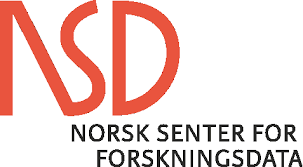Bionics and neural implants, new paradigm for rehabilitation
DOI:
https://doi.org/10.22335/rlct.v1i2.46Keywords:
Bionics, human-machine interface, neural implants, prosthesis, neuroprosthesisAbstract
Microelectronics Advanced signal processing is really reaching the dream of bringing to the reality the fusion between mankind and machine. In these artificial systems, the flow of information is done through data cables, and in some cases, by means of radio links, and the equivalent process of communication occurs to living beings, but the transfer takes place through the nerves. The two systems are connected through simple devices such as keyboard, mouse, touch screens, which will become more sophisticated and increasing its complexity, as the example of neuromuscular electrical stimulation that causes functional movements or the so-called sensory prostheses, used to restore loss of some organ.
Downloads
References
ALCIATORE, D. (2008). Mecatrónica. 1ª Edición. Buenos Aires: McGraw-Hill / Interamericana México.
ASKELAND, D. y PHULE, P. (2004). Essentials of materials science and engineering. University of Missouri, University of Pittsbourgh. Estados Unidos de América: Thompson.
DUNLOP, G. R. (2003). A distributed controller for the Canterbury hand, ICOM2003. International Conference on Mechatronics. Professional Engineering Publishing, London, UK. FLORES y otros (2004). Actualidad y tendencias en el diseño de prótesis de miembro superior. Memorias del X Congreso Anual de la Sociedad Mexicana de Ingeniería Mecánica, Querétaro, México.
GILBERTSON, R. (2000). Muscle Wires: ProjecT Book. 3ª edición. California: Ed. Mondo Tronics.
GUTIÉRREZ R., RODRÍGUEZ J. y BOLTON W. (2001). Mecatrónica. Marcombo. 2ª Edición.
HARRIS, M. y KYBERD, P. (2003). Design and development of a dextrous manipulator, ICOM2003. International Conference on Mechatronics. Professional Engineering Publishing, London, UK.
HURST, S. L. (1999). VLSI custom microelectronics: Digital, analog, and mixed-signal. USA: Marcel Dekker, Inc.
KAMRUZZAMAN J., BEGG R. y SARKER R. (2006). Artificial Neural Networks in Finance and Manufacturing. Francia: Hershey, PA Idea Group Publishing.
KUO, B. C. (1996). Sistemas de Control Automático. 7ª Edición. Buenos Aires: Prentice Hall.
KUTZ (2003). Standard Handbook of Biomedical Engineering and Design. New York: McGraw-Hill.
LANGE, RH. (2004). Limb reconstruction versus amputation decision making in massive lower extremity trauma. Clin Othops.
PALLAS-ARENY, R. y VALDÉS, F. E. (2007). Microcontroladores. Fundamentos y aplicaciones con PIC. 1ª Edición. Barcelona: Marcombo S. A.
PÉREZ, A. (2004). Multivariable Control Systems: An Engineering Approach. Advanced Textbooks in Control and Signal Processing 1439-2232. New York: London Springer-Verlag.
POPOVIC, D. (1999). Mechatronics in engineering design and product development. USA: Marcel Dekker, Inc.
RÍOS, LOUTH, DORADOR (2004). Uso de materiales con memoria de forma para actuar los dedos de una prótesis de miembro superior. Memorias del X Congreso Anual de la Sociedad Mexicana de Ingeniería Mecánica, Querétaro, México.
SANDER R., HELFET D. L., PAPAS J. (2004). The salvaje of grade IIIB open ankle and talus fracture. Othops Trans.
SEYMOUR, R. (2002). Prosthetics and Orthotics: Lower Limb and Spinal. Baltimore: Lippincott Williams & Wilkins.
Downloads
Published
Issue
Section
License
This journal provides free and immediate access to its content (https://creativecommons.org/licenses/by/4.0/legalcode#languages), under the principle that making research available to the public free of charge supports greater global knowledge exchange. This means that the authors transfer the Copyrights to the journal, so that the material can be copied and distributed by any means, as long as the authors’ recognition is maintained, and the articles are not commercially used or modified in any way.































